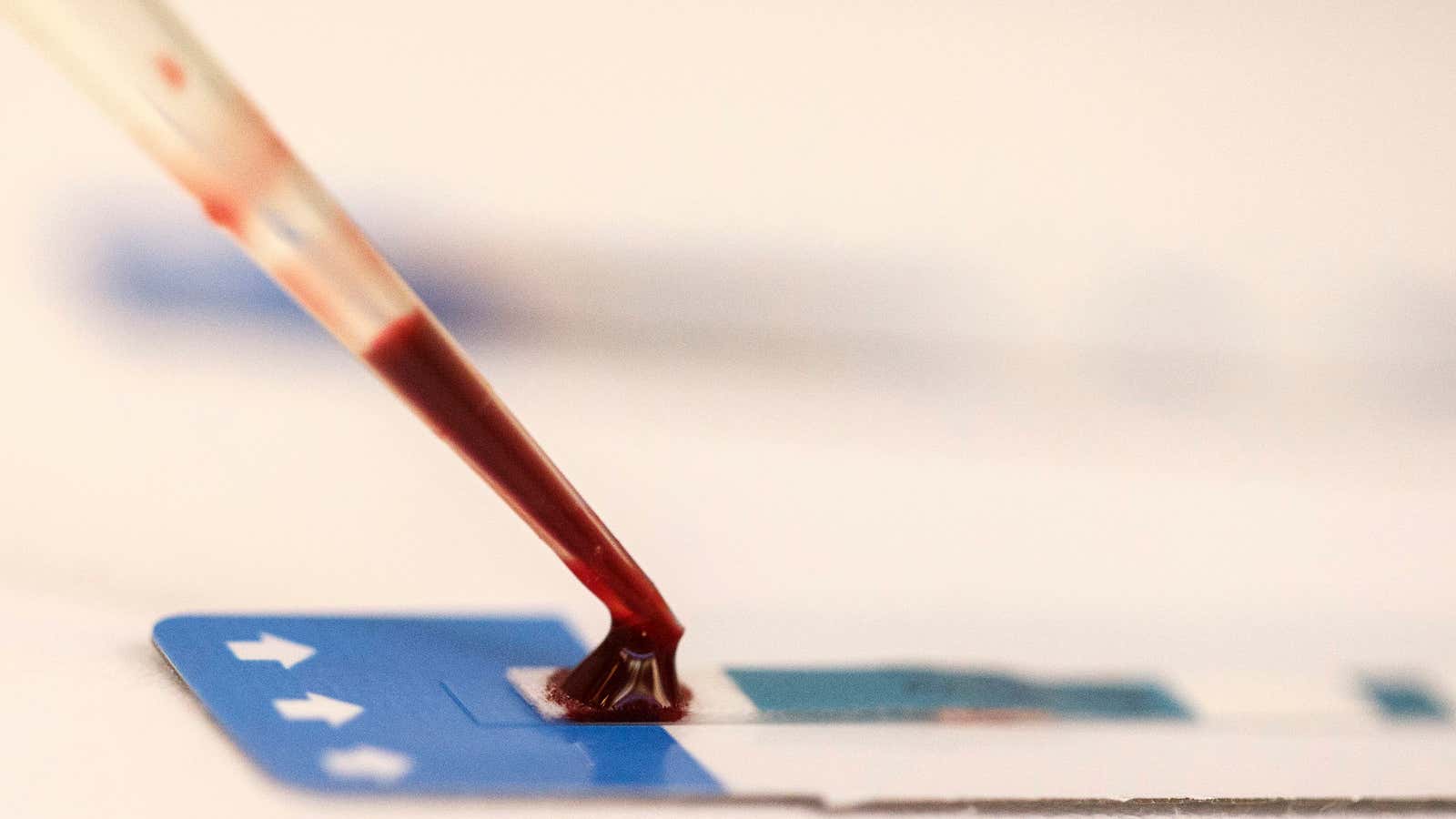Using a gene-editing technology that allows scientists to make precise changes to the genomes of human cells, researchers at Harvard have found a way to edit immune cells and make them resistant to HIV, according to a new study published in the journal Cell Stem Cell.
“The gene that we deleted is the doorway, the co-receptor that the HIV uses on T-cells to get in,” says Chad Cowan, on of the report’s authors and an associate professor at Harvard in stem cell and regenerative biology.
The cell-level resistance actually occurs naturally in a small number of Europeans, Cowan tells Quartz. A bone marrow transplant from one of these people allowed an HIV patient to become and remain HIV-free. The Harvard method could pave the way for similar treatment to occur without a donor—instead, doctors would be able to take bone marrow from an HIV patient, remove the receptor that the virus uses to enter cells, and reinsert the marrow into the patient, Cowan explains.
They’re currently testing the method in mice, Cowan says, and human trials could potentially happen within the next five years. The technology could be groundbreaking—drugs approved for HIV treatment and prevention keep the virus at bay, but with the procedure that the Harvard researchers are experimenting with, there could be a chance for the altered blood cells to multiply and beat the virus altogether.
But Cowan is careful to point out that the method would be a more time-consuming and medically intensive approach than the current therapies, and there are many opportunities for complications to arise. For example, scientists would need to make sure they’re not deleting other genes as well.
